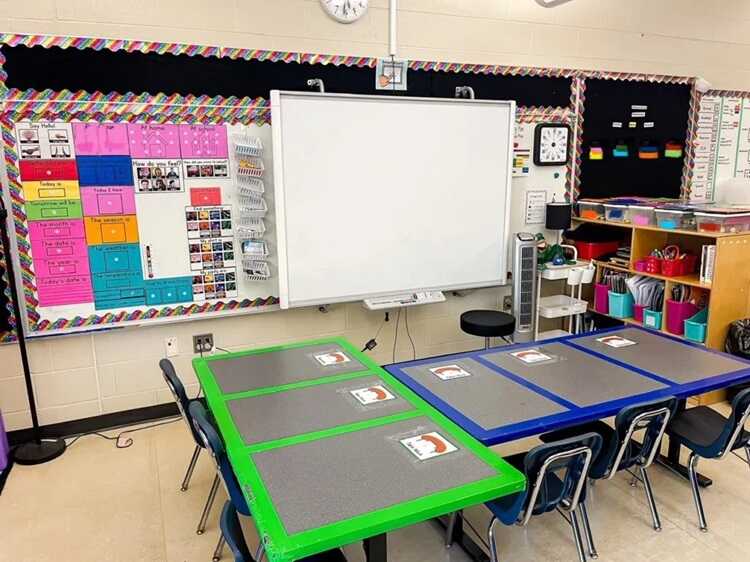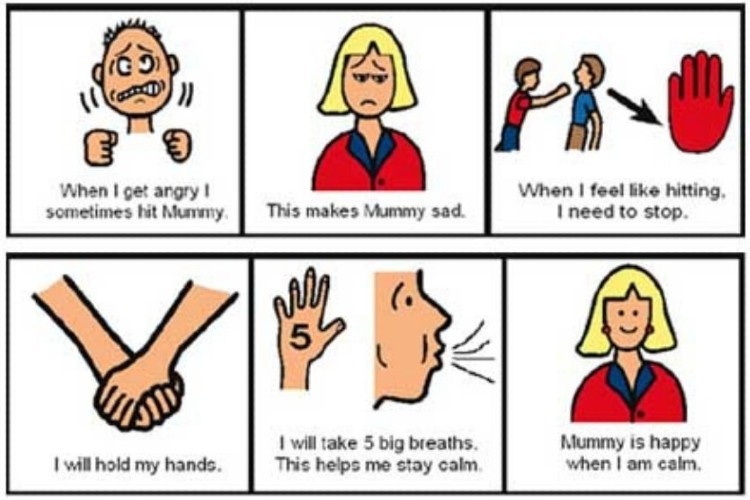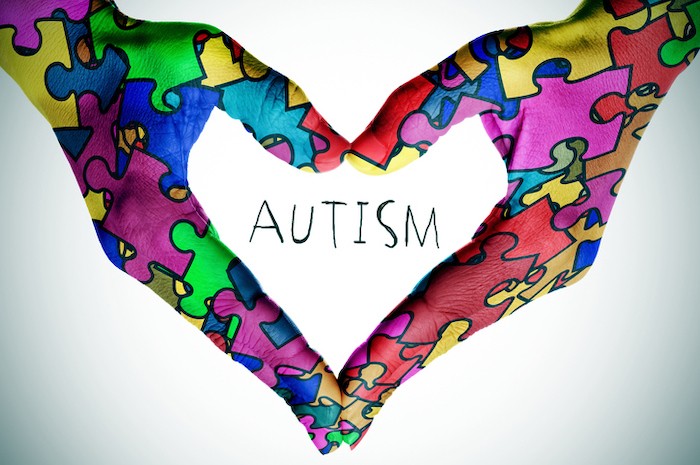Why Is Following Through Important When Giving Instructions
Learning to follow through is an essential skill for children with autism. Many parents worry that their children do not listen. Parenting a child can be challenging, especially when the child has autism. One primary concern for caregivers is when a child does not listen, often leading to a tantrum. This can be frustrating for everyone involved and can make tasks take longer. It is exhausting for both the caregiver and the child. Follow-through is crucial for a child’s growth and development. With it, tasks may be completed. The child may choose to do whatever they want, which can be okay sometimes. However, specific tasks need to be completed to help the day progress. Caregivers should first understand what follow-through means. They should learn the dos and don’ts. Finally, they can gain tips on implementing follow-through with their child.
Key areas to help navigate follow-through
- Defining Follow-Through and its Importance
- Realistic Expectations of Follow-Through
- Examples of Follow-through with Dos and Don’ts
- Tips when Implementing Follow-Through

Defining Follow-Through
Follow-through means ensuring a child completes a task within a set time frame. This skill is essential for real-world situations. As children grow up, they must complete tasks on time, like getting dressed for work or cleaning their space. However, children may prefer playing with toys instead of completing tasks. Follow-through can also create natural consequences. For example, if a child wants to go to the park, the parent might say, “Get dressed, and then we can go.” If the child plays with their toys instead, the parent can remind them to get dressed to enjoy the park. Learning to follow through is part of growing up. Children with autism may need more practice and assistance to master this skill.
Realistic Expectations of Follow-Through
Parent expectations should align with what a child can understand and do. It is crucial to assess this. As a parent, you know your child best. Think about their ability to grasp information. Can they handle multiple tasks? Do you need to simplify instructions? Consider breaking tasks down into specific steps. You are the one who knows your child’s capabilities and needs.
As parents, we often find ourselves navigating the complex landscape of our children’s development, behavior, and emotional needs. One critical aspect of this journey is setting realistic expectations for what our children can achieve and how they can follow through on tasks or responsibilities we assign to them. It’s essential to pause and evaluate whether our requests align with their developmental stage, abilities, and emotional readiness.

Examples of Follow-Through
Follow-through shows up in pretty much every aspect of a child’s day, from getting up and getting dressed to completing homework. When prompting follow-through, a caregiver should incorporate other helpful elements such as visuals and timers, as a child should already be used to them and can aid in completing the task all the way through.
For example, a visual schedule may be used for the morning routine, such as getting dressed, brushing teeth, and making bed. A caregiver would then tell the child to follow the morning schedule and maybe set a timer, letting the child know that if they can complete the morning routine within the timer, they can receive a reward. A caregiver should not leave the child to complete the tasks independently, especially in the beginning. This can be difficult because the caregiver also has tasks they need to get done, but a caregiver should regularly check in on the child to make sure the follow-through is happening.
While the child is still learning to follow through, it is important that the caregiver help model the task by doing part of the task for the child and then backing off for the child to complete the task, known as forward chaining. For example, if a caregiver requests that the child get dressed, the caregiver can start the process by putting the shirt over the child’s head and then backing off to let the child put their arms through to finish the task of putting on the shirt. Don’t expect the child to complete the task the first time alone. Having that expectation will become a frustration for all. The child needs practice and repetition to be able to complete the task on their own.
Which scenario would work best?
Scenario #1:
Imagine this situation. Mom gives Sally her clothes in the morning and tells her to get dressed. Mom then leaves the room and tries to get lunches and other kids ready as well. She returns, and Sally is still in her jammies, playing with her dolls. Mom tells Sally again that she needs her to get dressed, this time making sure Sally is looking at her while she gives her instructions, points to the clothes, and then leaves again to finish getting things ready for school. When she comes back five minutes later, Sally is still in her jammies, playing with her dolls. When Sally’s mom tells her to put her jammies on in the future, do you think Sally will comply? Probably not.
Scenario #2:
Try this instead. Mom tells Sally she has three more minutes to play with her dolls, and then it’s time to get dressed. She sets a timer so the beep becomes a signal to transition to another activity (dressing). When the timer goes off, Mom is there to take the dolls and give Sally her clothes. She tells her, “Get dressed.” Instead of leaving the room, Mom stays to make sure Sally starts getting dressed. If Sally just sits there, within about 10 seconds, Mom tells Sally again to get dressed, but this time, Mom helps Sally start taking off her jammies, gradually backing away as Sally does more and more of the task herself. Mom does not leave the room and does not repeatedly tell Sally, “Get dressed,” without helping and ensuring Sally gets dressed. Once Sally is done getting dressed, Sally’s mom gives her the dolls back for 5 more minutes of play before school as a reward for getting dressed. Here, Sally will learn, over repeated times of Sally’s mom following through, that when her mom tells her to get dressed, she cannot continue playing with her toys unless she does what her mom says.
If you selected scenario #2, you are correct. It does take more effort and time to follow through with your child, but it will be worth it in the end. One of the most important factors when increasing your child’s compliance is follow-through!

Tips when implementing follow-through with autistic children
- Use visuals and timers. Since children should be familiar with these tools, incorporating them can help them follow through and complete tasks. Read more about these tools here.
- Repeat the desired task. Caregivers may think they should only have to give a direction once, and the child will follow. However, children with autism need repetition to complete the task.
- Practice. Practice. Practice. Just as with repeating the desired task verbally, children with autism will need to practice the skill many times and in different situations to grasp the skill of following through.
- Help the child start the task. Helping a child begin the task can make the follow-through go more smoothly for everyone and incorporate teamwork.
- Offer a reward. Offering a reward can help with follow-through on tasks. The reward does not need to be anything crazy. It can be as simple as watching a favorite show after completing homework.
Teaching children with autism the skill of follow-through can be challenging. They often prefer to do what they want. Caregivers can help by modeling task completion. When children see that completing tasks leads to rewards, like TV time or snacks, it becomes easier for them. Teaching this skill early can aid their development. For example, learning to brush their teeth can lead to getting dressed. Eventually, these tasks can become part of their morning routine, including making the bed.
Implementing follow-through with autistic children can indeed be challenging, but with the right strategies, caregivers can effectively teach this essential skill. Autistic children often favor activities that resonate with their interests or provide immediate gratification, making it crucial to introduce the concept of task completion in a way that feels rewarding and manageable for them. LeafWing Center can help develop follow-through with your child with autism by using a task analysis approach that breaks tasks down into manageable steps.
Glossary Terms
- ABC’s of Behavior
- Acquisition Task
- Backward Chaining
- Forward Chaining
- Chronological Age/ Developmental Age
Other Related Articles:
- Autism Feeding Issues
- Alternative Behavior Examples To Decrease Challenging Behaviors
- Autism And Motivation In Children
- What Approach Should Caregivers Take with Challenging Behaviors?
- What Not To Do With A Child With Autism
Frequently asked questions about ABA therapy
What is ABA Therapy used for?
ABA-based therapy can be used in a multitude of areas. Currently, these interventions are used primarily with individuals living with ASD; however, their applications can be used with individuals living with pervasive developmental disorders as well as other disorders. For ASD, it can be used in effectively teaching specific skills that may not be in a child’s repertoire of skills to help him/her function better in their environment whether that be at home, school, or out in the community. In conjunction with skill acquisition programs, ABA-based interventions can also be used in addressing behavioral excesses (e.g., tantrum behaviors, aggressive behaviors, self-injurious behaviors). Lastly, it can also be utilized in parent/caregiver training.
In skill acquisition programs, a child’s repertoire of skills is assessed in the beginning phase of the services in key adaptive areas such as communication/language, self-help, social skills, and motor skills as well. Once skills to be taught are identified, a goal for each skill is developed and then addressed/taught by using ABA-based techniques to teach those important skills. Ultimately, an ABA-based therapy will facilitate a degree of maintenance (i.e., the child can still perform the learned behaviors in the absence of training/intervention over time) and generalization (i.e., the learned behaviors are observed to occur in situations different from the instructional setting). These two concepts are very important in any ABA-based intervention.
In behavior management, the challenging behaviors are assessed for their function in the beginning phase of the services. In this phase, the “why does this behavior happen in the first place?” is determined. Once known, an ABA-based therapy will be developed to not just decrease the occurrence of the behavior being addressed, but also teach the child a functionally-equivalent behavior that is socially-appropriate. For example, if a child resorts to tantrum behaviors when she is told she cannot have a specific item, she may be taught to accept an alternative or find an alternative for herself. Of course, we can only do this up to a certain point—the offering of alternatives. There comes a point when a ‘no’ means ‘no’ so the tantrum behavior will be left to run its course (i.e., to continue until it ceases). This is never easy and will take some time for parents/caregivers to get used to, but research has shown that over time and consistent application of an ABA-based behavior management program, the challenging behavior will get better.
In parent training, individuals that provide care for a child may receive customized “curriculum” that best fit their situation. A typical area covered in parent training is teaching responsible adults pertinent ABA-based concepts to help adults understand the rationale behind interventions that are being used in their child’s ABA-based services. Another area covered in parent training is teaching adults specific skill acquisition programs and/or behavior management programs that they will implement during family time. Other areas covered in parent training may be data collection, how to facilitate maintenance, how to facilitate generalization of learned skills to name a few.
There is no “one format” that will fit all children and their families’ needs. The ABA professionals you’re currently working with, with your participation, will develop an ABA-based treatment package that will best fit your child’s and your family’s needs. For more information regarding this topic, we encourage you to speak with your BCBA or reach out to us at info@leafwingcenter.org.
Who Can Benefit From ABA Therapy?
There is a common misconception that the principles of ABA are specific to Autism. This is not the case. The principles and methods of ABA are scientifically backed and can be applied to any individual. With that said, the U.S. Surgeon General and the American Psychological Association consider ABA to be an evidence based practice. Forty years of extensive literature have documented ABA therapy as an effective and successful practice to reduce problem behavior and increase skills for individuals with intellectual disabilities and Autism Spectrum Disorders (ASD). Children, teenagers, and adults with ASD can benefit from ABA therapy. Especially when started early, ABA therapy can benefit individuals by targeting challenging behaviors, attention skills, play skills, communication, motor, social, and other skills. Individuals with other developmental challenges such as ADHD or intellectual disability can benefit from ABA therapy as well. While early intervention has been demonstrated to lead to more significant treatment outcomes, there is no specific age at which ABA therapy ceases to be helpful.
Additionally, parents and caregivers of individuals living with ASD can also benefit from the principles of ABA. Depending on the needs of your loved one, the use of specified ABA techniques in addition to 1:1 services, may help produce more desirable treatment outcomes. The term “caregiver training” is common in ABA services and refers to the individualized instruction that a BCBA or ABA Supervisor provides to parents and caregivers. This typically involves a combination of individualized ABA techniques and methods parents and caregivers can use outside of 1:1 sessions to facilitate ongoing progress in specified areas.
ABA therapy can help people living with ASD, intellectual disability, and other developmental challenges achieve their goals and live higher quality lives.
What does ABA Therapy look like?
Agencies that provide ABA-based services in the home-setting are more likely to implement ABA services similarly than doing the same exact protocols or procedures. Regardless, an ABA agency under the guidance of a Board-Certified Behavior Analyst follows the same research-based theories to guide treatment that all other acceptable ABA agencies use.
ABA-based services start with a functional behavior assessment (FBA). In a nutshell, a FBA assesses why the behaviors may be happening in the first place. From there, the FBA will also determine the best way to address the difficulties using tactics that have been proven effective over time with a focus on behavioral replacement versus simple elimination of a problem behavior. The FBA will also have recommendations for other relevant skills/behaviors to be taught and parent skills that can be taught in a parent training format to name a few. From there, the intensity of the ABA-based services is determined, again, based on the clinical needs of your child. The completed FBA is then submitted to the funding source for approval.
One-on-one sessions between a behavior technician and your child will start once services are approved. The duration per session and the frequency of these sessions per week/month will all depend on how many hours your child’s ABA services have been approved for—usually, this will be the number recommended in the FBA. The sessions are used to teach identified skills/behaviors via effective teaching procedures. Another aspect of ABA-based services in the home-setting is parent training. Parent training can take many forms depending on what goals have been established during the FBA process. The number of hours dedicated for parent training is also variable and solely depends on the clinical need for it. If a 1:1 session is between a behavior technician and your child, a parent training session or appointment is between you and the case supervisor and with and without your child present, depending on the parent goal(s) identified. Parent training service’s goal is for you to be able to have ample skills/knowledge in order for you to become more effective in addressing behavioral difficulties as they occur outside of scheduled ABA sessions. Depending on the goals established, you may be required to participate in your child’s 1:1 sessions. These participations are a good way for you to practice what you have learned from the case supervisor while at the same time, having the behavior technician available to you to give you feedback as you practice on those new skills.
As mentioned in the beginning, no two ABA agencies will do the same exact thing when it comes to providing ABA services; however, good agencies will always base their practice on the same empirically-proven procedures.
How do I start ABA Therapy?
In most cases, the first item required to start ABA therapy is the individual’s autism spectrum disorder (ASD) diagnosis report. This is typically conducted by a doctor such as a psychiatrist, psychologist, or a developmental pediatrician. Most ABA therapy agencies and insurance companies will ask for a copy of this diagnosis report during the intake process as it is required to request an ABA assessment authorization from the individual’s medical insurance provider.
The second item required to start ABA therapy is a funding source. In the United States, and in cases where Medi-Cal or Medicare insurances are involved, there is a legal requirement for ABA services to be covered when there is a medical necessity (ASD diagnosis). Medi-Cal and Medicare cover all medically necessary behavioral health treatment services for beneficiaries. This typically includes children diagnosed with ASD. Since Applied Behavior Analysis is an evidence based and effective treatment for individuals with ASD, it is considered a covered treatment when medically necessary. In many cases, private insurance will also cover ABA services when medically necessary, however in these cases, it is best to speak directly with your medical insurance provider to determine the specifics of the coverage and to ensure that ABA is in fact, a covered benefit. Additionally, some families opt to pay for ABA services out-of-pocket.
The next step to starting ABA therapy is to contact an ABA provider whom you are interested in working with. Depending on your geographic location, ABA agencies exist in many cities across the United States. Your insurance carrier, local support groups, and even a thorough online search can help you find reputable and properly credentialed ABA agencies near you. Our organization, LeafWing Center, is based in southern California and is recognized for aiding people with ASD achieve their goals with the research based on applied behavior analysis.
Once you have identified the ABA provider with whom you wish to work, they should help you facilitate the next steps. These will include facilitating paperwork and authorizations with your funding source. Once the assessment process begins, a BCBA (Board Certified Behavior Analyst) or qualified Program Supervisor should get in contact with you to arrange times in which interviews with parents/caregivers and observations of your loved one can be conducted. This will help in the process of gathering important clinical information so that with your collaboration, the most effective treatment plans and goals can be established for your loved one. This process is referred to as the Functional Behavior Assessment (FBA) and is elaborated on in different blog posts on our website. With regard as to what can be expected once ABA therapy begins, please read our blog post titled: When You Start an ABA program, What Should You Reasonably Expect from Your Service Provider?






























